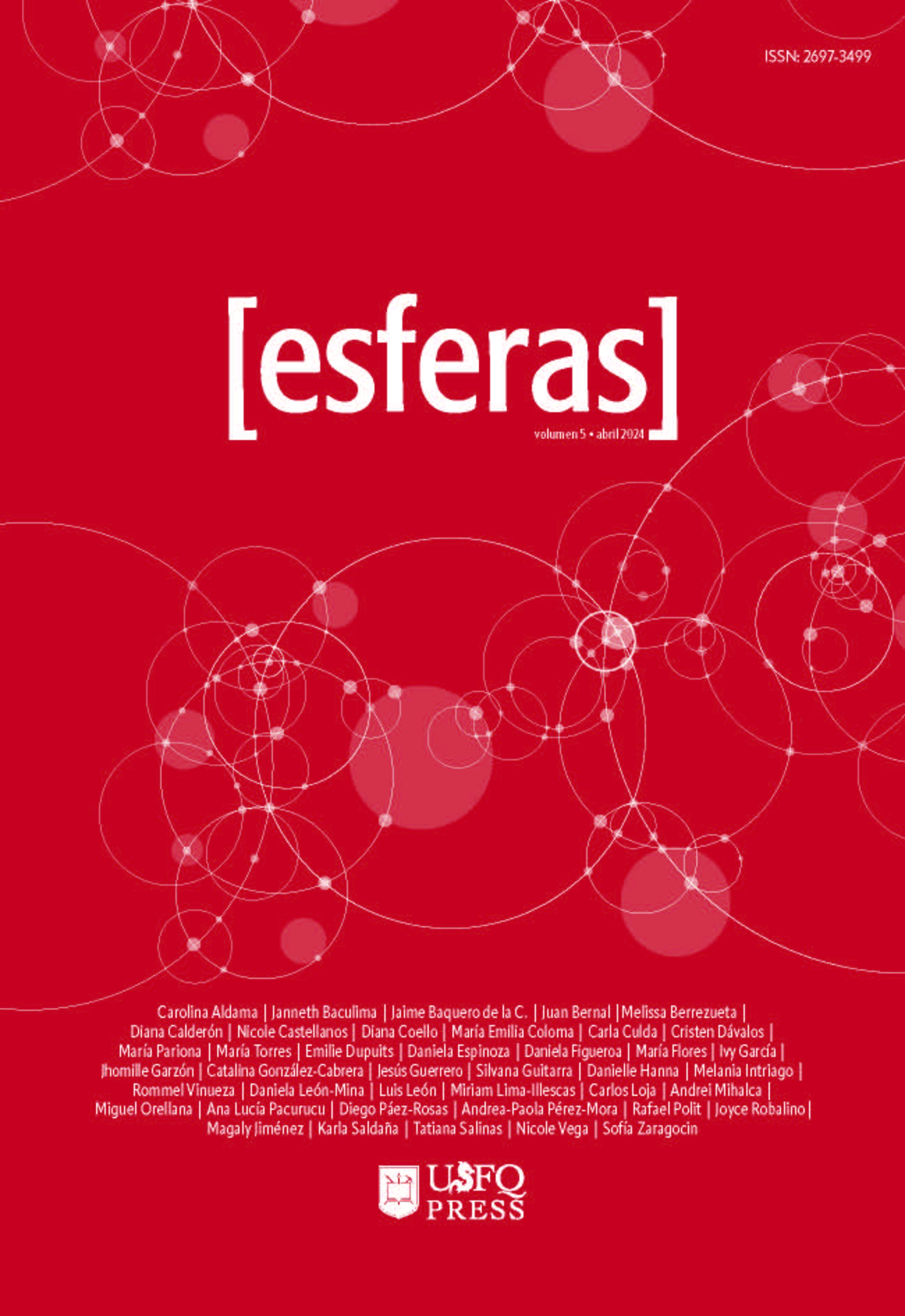Publicado 2024-04-01
Palabras clave
- Titeres,
- 911,
- Abuso sexual,
- Narraciones por un cambio
Cómo citar
Derechos de autor 2024 ana Lucia PAcurucu, Catalina Gonzalez Cabrera, Carlos Loja Liivisaca

Esta obra está bajo una licencia internacional Creative Commons Atribución-NoComercial 4.0.
Resumen
El proyecto “títeres” nació en mayo 2021 como parte de un proyecto más grande “Narraciones por un cambio”, que incluye cuentos y videos para promover la prevención del abuso infantil, dado que esta problemática es muy amplia en nuestro país y que durante la pandemia de COVID 19 se incrementó mostrando la necesidad de trabajar directamente con los niños, para que puedan pedir ayuda apenas detecten alguna situación peligrosa, que vengan de otras personas sean estas conocidas o no. Este proyecto está ligado con los siguientes Objetivos de Desarrollo Sostenible (ODS) 3. Salud y bienestar, 4. Educación de calidad, 5. Igualdad de género, 11 ciudades y comunidades sostenibles y 16. Paz, justicia e instituciones sólidas. La obra de títeres fue presentada en diferentes escuelas, a los niños y niñas de todas las edades, enseña como dos niños “Esthela y Fermín” se enfrentan a su vecino “Freddy” cuando sienten que les quiere hacer daño y solicitan ayuda a la policía, llamando al 911 que es el número de emergencia. Los resultados de este proyecto mostraron como la educación es un elemento fuerte para el desarrollo sostenible a largo plazo, se demostró que el eduentretenimiento a través del uso de títeres aumenta la intensión de pedir ayuda en los niños, también se constató que el mensaje preventivo fue adquirido en los niños a través del reconocimiento del peligro.
Descargas
Citas
- Echeburúa, E. y Guerricaechevarría, C. (1998). Abuso sexual. En M.A. Vallejo (Coord.), Manual de Terapia de Conducta (pp.563-601). Madrid: Dykinson.
- Espinoza, L. (2018). Técnica de títere en el desarrollo emocional de estudiantes de cinco años en la Institución Educativa “Jesús Nazareno”, Pasco 2018. Escuela de posgrado Universidad César Vallejo. Revisado en abril 4, 2023, recuperado de http://www.takey.com/Thesis_365.pdf
- Feiring, C., Miller-Johnson, S. y Cleland, C. M. (2007). Potential pathways from stigmatization and internalizing symptoms to delinquency in sex-ually abused youth. Child Maltreatment, 12, 220-232.
- Hébert, M., Tremblay, C., Parent, N., Daignault, I. V. y Piché, C. (2006). Correlates of behavioral outcomes in sexually abused children. Journal of Family Violence, 21, 287-299.
- Kroflin, L. (2012). El papel del títere en la enseñanza de lenguas. El poder del títere , 46-62.
- Muela, A., Balluerka, N. y Torres, B. (2013). Ajuste social y escolar de jóve-nes víctimas de maltrato infantil en situación de acogimiento residencial. Anales de Psicología, 29, 197-206.
- Navarrete Zúñiga, G. B., y Sánchez Proaño, M. C. (2022). El impacto de los títeres en la prevención del abuso sexual infantil (Bachelor's thesis, Universidad del Azuay).
- Observatorio Social del Ecuador (2018). Situación de la niñez y adolescencia en el Ecuador, una mirada a través de los ODS.
- OMS. (8 de junio de 2020). Organizacion Mundial de la Salud. Obtenido de https://www.who.int/es/news-room/fact-sheets/detail/child-maltreatment
- Pinasco, G. y Campaña, D. (2020, 13 de julio). Los fantasmas del niño que sufrió abuso sexual por su profesor de educación física. Vistazo. https://www.vistazo.com/seccion/los-fantasmas-del-nino-que-sufrio-abuso-sexual-por-su-profesor-de-educacion-fisica
- Plan Internacional (2021) Informe Sombra al Comité de la Convención sobre la Eliminación de Todas las Formas de Discriminación contra la Mujer https://plan.org.ec/ecuador-registra-alto-promedio-de-denuncias-por-violacion-abuso-y-acoso-sexual/
- Rodriguez, G. (2018, 28 de noviembre). Abuso sexual en menores de edad, problema de salud pública. Revista de la facultad de psicología y Humanidades, (23). http://revistas.unife.edu.pc/index.php/avancesenpsicologia/article/view/171
- Rosa, A. (2019). Teatro de títeres como estrategia para potenciar la atención de niños de 5 años de la Escuela de Educación Básica Isabel Herrera de Velázquez. SciELO Cuba. Revisado en abril 4, 2023, recuperado de http://scielo.sld.cu/scielo.php?script=sci_arttext&pid=S1990-86442019000500370
- Singhal, A., Cody, MJ, Rogers, EM y Sabido, M. (Eds.). (2003). Entretenimiento-educación y cambio social: historia, investigación y práctica . Rutledge.
- Tang, K., Qu, X., Li, C., y Tan, S. (2018). Childhood sexual abuse, risky sexual behaviors and adverse reproductive health outcomes among Chinese college students. Child Abuse & Neglect, 84, 123-130. https://doi.org/10.1016/j.chiabu.2018.07.038
- Tareen, A., Garralda, E.M. y Hodes, M. (2007). Post-traumatic stress disorder in childhood. Archives of Disease in Childhood- Education & Practice Edition, 92, 1-6.
- UNICEF comité Español (2006). Convención sobre los derechos del niño. https://www.un.org/es/events/childrenday/pdf/derechos.pdf
- UNICEF. (2016). Abuso sexual contra niños, niñas y adolescentes. Una guía para tomar acciones y proteger sus derechos. https://www.unicef.org/ecuador/proteccion-AbusoSexual_contra_NNyA-2016_(1).pdf
- Zeinali, H. (2017). Los títeres como herramienta educativa para niños de infantil y primaria. Universidad de Alcalá. Revisado en abril 4, 2023, recuperado de https://ebuah.uah.es/dspace/bitstream/handle/10017/41472/Tesis%20Hossein%20Zeinali.pdf?sequence=1&isAllowed=y

